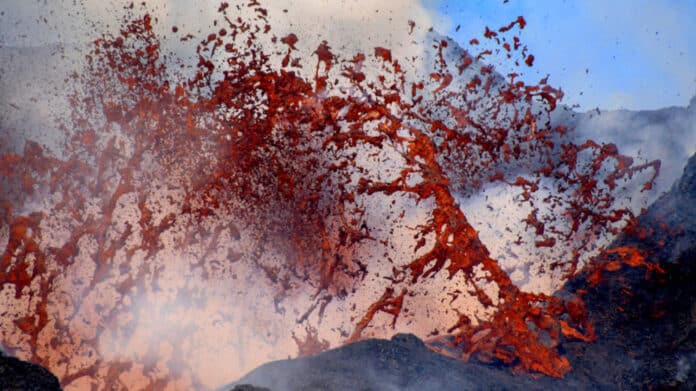Constraining the volatile content of magmas is critical to our understanding of eruptive processes and their deep Earth cycling essential to planetary habitability. Yet, much of the work thus far on magmatic volatiles has been dedicated to understanding their cycling through subduction zones.
Geoscientists have long believed that shallow magma held in the Earth’s crust, together with water, causes volcanoes to erupt. Researchers at Cornell have recently created new technologies that have allowed them to discover that gaseous carbon dioxide can cause explosive eruptions.
According to a new model, basaltic volcanoes, often found inside the mantle, are fueled by deep magma stored 20 to 30 kilometers beneath the surface of the Earth.
The study offers a clear view of the planet’s deep internal dynamics and composition, with implications for improving volcanic-hazards planning.
Senior author Esteban Gazel, the Charles N. Mellowes Professor in Engineering in the Department of Earth and Atmospheric Sciences, said, “We used to think all the action happened in the crust. Our data implies the magma comes directly from the mantle – passing fast through the crust – driven by the exsolution (the process phase of separating gas from liquid) of carbon dioxide.”
“This completely changes the paradigm of how these eruptions happen. All volcanic models had been dominated by water as the main eruption driver, but water has little to do with these volcanoes. It’s carbon dioxide that brings this magma from the deep Earth.”
Almost four years ago, scientists developed a high-precision carbon dioxide densimeter for Raman spectroscopy. Then, using the recently invented densimeter, the natural samples—microscopic-sized carbon dioxide-rich bubbles trapped in crystals coming from the volcanic eruption—are analyzed using Raman. The researchers are looking at a minuscule time capsule with information about the magma’s past.
This new technique is critical for near real-time precise estimations of magma storage.
The researchers also created techniques for measuring melt inclusion and bubble volumes, as well as how laser heating affected carbon-dioxide-rich inclusions that were observed encasing the crystals. They also created an experimental reheating method to improve accuracy and appropriately account for carbon dioxide trapped as carbonate crystals inside the bubbles.
Gazel said, “The method of development and instrument design was challenging, especially during the height of the pandemic.”
Using these new tools, the scientists examined volcanic deposits from the Fogo volcano in Cabo Verde, west of Senegal, in the Atlantic Ocean. In the microscopic melt inclusions contained within the crystals of magnesium-iron silicate, they discovered a high concentration of volatiles. The crystals’ increased carbon dioxide content indicated that the magma was held in the Earth’s mantle, tens of kilometers below the surface.
The team also found a link between this mechanism and the deep mantle source that feeds these volcanoes.
The study suggests that eruptions such as Fogo’s volcanic flareups start and are fed from the mantle, effectively bypassing storage in the Earth’s crust and driven by deep carbon dioxide.
Charlotte DeVitre, Ph.D. ’22 said, “These magmas have extremely low viscosities and come directly from the mantle. So here, viscosity and water cannot play the common roles they do in shallower and/or more silicic (rich in silica) volcanic systems. Rather at Fogo volcano, the magma must be driven up fast by the carbon dioxide, and this likely plays a significant role in its explosive behavior. This is a major step in our understanding of the controls on basaltic explosivity.”
Gazel said, “Comprehending magma storage helps best prepare society for future eruptions.”
“As deep magma storage will not be detected by ground deformation until the melt is close to the surface, this has important repercussions to our understanding of volcanic hazards. We need to understand the drivers of these eruptions. The only way to see these processes now is by observing earthquakes, but earthquakes don’t tell you exactly what’s happening.”
“With precise measurements that tell us where eruptions start, where magmas melt and where they are stored – and what triggers the eruption – we can develop a much better plan for future eruptions.”
Journal Reference:
- Charlotte L. DeVitre, Esteban Gazel, Ricardo S. Ramalho and Brian Monteleone. Oceanic intraplate explosive eruptions fed directly from the mantle. PNAS. DOI: 10.1073/pnas.2302093120
